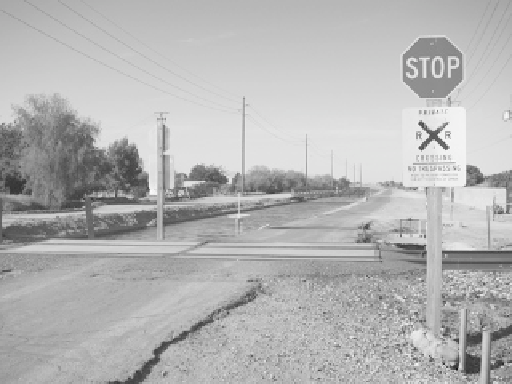Travel Reference
In-Depth Information
corridors. This is very common and is often associated with publically held
parklands or community greenbelts. Second, easement rights, such as the
railbeds noted earlier or utility right-of-ways, are commonly used to allow
trail development across private property. A third method is the license
agreement, which is negotiated between public agencies to allow multiple
uses of utility infrastructure (e.g. canal access or tow paths) (Figure 6.4). This
advantageous arrangement usually includes minimized right-of-way and
construction costs, and requires that long-term agreements are in place and
liability and maintenance are shared responsibilities. Fourth is land leasing.
This tactic affords the least degree of control for the trail-sponsoring organi-
zation in terms of infrastructure improvements, but it is sometimes the only
option available. It can also be quite costly, as it involves an ongoing monthly
or annual expense (Fiala, 1999: 67-68). The final option is land purchase.
While this is the most expensive and least common for tracks that cross
multiple land uses and ownerships, it can be a useful acquisition approach
for short trails in urban or suburban areas, rural zones or within and around
national parks.
Participatory development
As McNamara and Prideaux (2011) and others (e.g. Briedenhann &
Wickens, 2004) have implied, building community support for a trail is
essential, particularly in areas where there has been a lot of contention and
apprehension about a proposed project. Participatory development is a crucial
precursor of sustainable tourism. While it acknowledges the importance of
ecological conservation, it takes tourism planning and development beyond
Figure 6.4
Trail use of utility infrastructure (water works) in Gilbert, Arizona

Search WWH ::

Custom Search